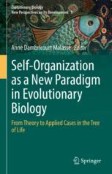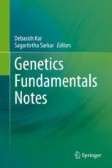Search
Search Results
-
Genomic and transcriptomic survey of bryozoan Hox and ParaHox genes with emphasis on phylactolaemate bryozoans
BackgroundBryozoans are mostly sessile aquatic colonial invertebrates belonging to the clade Lophotrochozoa, which unites many protostome bilaterian...

-
Mutation of amphioxus Pdx and Cdx demonstrates conserved roles for ParaHox genes in gut, anus and tail patterning
BackgroundThe homeobox genes Pdx and Cdx are widespread across the animal kingdom and part of the small ParaHox gene cluster. Gene expression...

-
Insulin and circadian rhythm genes of the Nile rat (Arvicanthis niloticus) are conserved and orthologous to those in the rat, mouse and human
The African grass or Nile rat (NR) ( Arvicanthis niloticus ) is a herbivorous diurnal rodent which is used as a biological model for research on type 2...

-
Extensive loss of Wnt genes in Tardigrada
BackgroundWnt genes code for ligands that activate signaling pathways during development in Metazoa. Through the canonical Wnt (cWnt) signaling...

-
Horseshoe crab genomes reveal the evolution of genes and microRNAs after three rounds of whole genome duplication
Whole genome duplication (WGD) has occurred in relatively few sexually reproducing invertebrates. Consequently, the WGD that occurred in the common...

-
Reconstruction of ancient homeobox gene linkages inferred from a new high-quality assembly of the Hong Kong oyster (Magallana hongkongensis) genome
BackgroundHomeobox-containing genes encode crucial transcription factors involved in animal, plant and fungal development, and changes to homeobox...

-
Irreducible Complexity of Hox Gene: Path to the Canonical Function of the Hox Cluster
AbstractThe evolution of major taxa is often associated with the emergence of new gene families. In all multicellular animals except sponges and comb...

-
Sea cucumbers: an emerging system in evo-devo
A challenge for evolutionary developmental (evo-devo) biology is to expand the breadth of research organisms used to investigate how animal diversity...

-
Genome of the four-finger threadfin Eleutheronema tetradactylum (Perciforms: Polynemidae)
BackgroundTeleost fish play important roles in aquatic ecosystems and aquaculture. Threadfins (Perciformes: Polynemidae) show a range of interesting...

-
Early Stages of Animal Mesoderm Evolution
AbstractSequencing of genomes of unicellular eukaryotes Holozoa ( Monosiga brevicollis, Capsaspora owczarzaki ), basal multicellular Porifera and...
-
Self-Organization at Different Levels of Metazoan Complexity in Comparative Genomic–Phenomic Context
The chapter presents an analytic description of evolutionary and developmental morphogenetic events in Metazoa using concepts of self-organization,...
-
The genome of an apodid holothuroid (Chiridota heheva) provides insights into its adaptation to a deep-sea reducing environment
Cold seeps and hydrothermal vents are deep-sea reducing environments that are characterized by lacking oxygen and photosynthesis-derived nutrients....

-
Genome Duplications as the Basis of Vertebrates’ Evolutionary Success
AbstractVertebrates, often considered as the most sophisticatedly organized animals, have a number of unique morphological features that ensured...

-
Parallel Evolution of Transcription Factors in Basal Metazoans
Transcription factors (TFs) play a pivotal role as regulators of gene expression, orchestrating the formation and maintenance of diverse animal body...
-
De novo genome assembly and annotation of Holothuria scabra (Jaeger, 1833) from nanopore sequencing reads
BackgroundHolothuria scabra is a costly gourmet and traditional Chinese tonic medicine. However, the lack of high-quality genome information hinders...

-
Developmental Genetics
The foundation of the genetic approach to understand the development of an organism is that all the information is already encoded in an organism’s...
-
Amphioxus SYCP1: a case of retrogene replacement and co-option of regulatory elements adjacent to the ParaHox cluster
Retrogenes are formed when an mRNA is reverse-transcribed and reinserted into the genome in a location unrelated to the original locus. If this...

-
Expression of NK genes that are not part of the NK cluster in the onychophoran Euperipatoides rowelli (Peripatopsidae)
BackgroundNK genes are a group of homeobox transcription factors that are involved in various molecular pathways across bilaterians. They are...

-
Two more Posterior Hox genes and Hox cluster dispersal in echinoderms
BackgroundHox genes are key elements in patterning animal development. They are renowned for their, often, clustered organisation in the genome, with...

-
The ontogeny of elements: distinct ontogenetic patterns in the radular tooth mineralization of gastropods
The molluscan phylum is characterized by the radula, used for the gathering and processing of food. This structure can consist of a chitinous...

